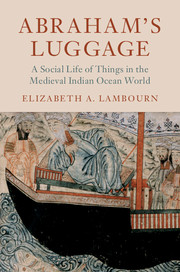Book contents
- Abraham’s Luggage
- Asian Connections
- Abraham’s Luggage
- Copyright page
- Dedication
- Contents
- Figures
- Tables
- Acknowledgments
- Notes on Style and Transliteration
- Abbreviations
- 1 Introduction: A List of Luggage from the Indian Ocean World
- 2 From Ifriqiya to Malibarat: Introducing Abraham Ben Yiju
- Part I A Mediterranean Society in Malibarat
- Part II A Mediterranean Society at Sea
- Appendix Abraham’s List of Luggage (India Book III, 24): Transcription, Transliteration and Translation
- Select Bibliography
- Index
- References
Select Bibliography
Published online by Cambridge University Press: 28 September 2018
- Abraham’s Luggage
- Asian Connections
- Abraham’s Luggage
- Copyright page
- Dedication
- Contents
- Figures
- Tables
- Acknowledgments
- Notes on Style and Transliteration
- Abbreviations
- 1 Introduction: A List of Luggage from the Indian Ocean World
- 2 From Ifriqiya to Malibarat: Introducing Abraham Ben Yiju
- Part I A Mediterranean Society in Malibarat
- Part II A Mediterranean Society at Sea
- Appendix Abraham’s List of Luggage (India Book III, 24): Transcription, Transliteration and Translation
- Select Bibliography
- Index
- References
- Type
- Chapter
- Information
- Abraham's LuggageA Social Life of Things in the Medieval Indian Ocean World, pp. 268 - 287Publisher: Cambridge University PressPrint publication year: 2018



